Knee Arthritis III-IV Degree — Total Knee Replacement and Rehabilitation: treatment in the Best Hospitals in the World
Treatment prices are regulated by national law of the corresponding countries, but can also include additional hospital coefficients. In order to receive the individual cost calculation, please send us the request and medical records.
Treatment of Knee arthritis
- Knee arthritis
- Arthroscopic or open surgery and transplantation of cartilage
- Total knee replacement
- Diagnosis and conservative treatment
- Endoprosthesis replacement in knee arthritis
- Endoprosthesis replacement in knee arthritis with rehabilitation
- Collagen or Polyurethan (ACTIFIT) Meniskus Implantat
- Treatment with autologous conditioned plasma (ACP)
- Stem cell therapy
- Autologous chondrocyte implantation (ACI)
- Orthopedic rehabilitation
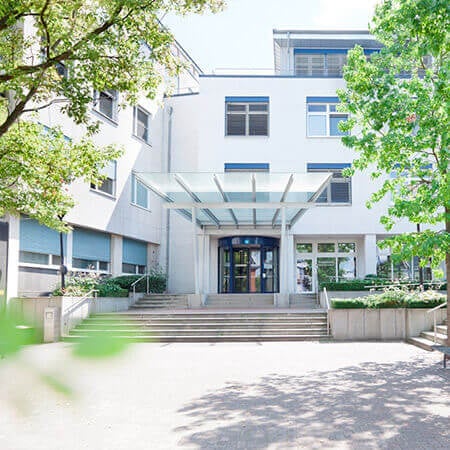
Department of Adult and Pediatric Orthopedics, Traumatology
The Department of Adult and Pediatric Orthopedics, Traumatology is part of the specialized Center for Musculoskeletal Disorders, whose medical team consists of highly qualified orthopedists, traumatologists, and spinal surgeons. The department offers modern diagnostics and treatment of the entire range of musculoskeletal diseases. The department's field of competence includes the treatment of injuries of varying severity. The therapeutic options cover both conservative measures and surgical interventions, which are mainly performed using sparing minimally invasive techniques. The treatment concept is based on the comprehensive approach – from the use of conservative methods to physiotherapeutic procedures the day after surgery.
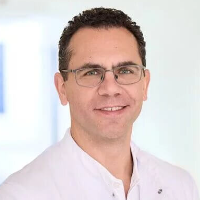


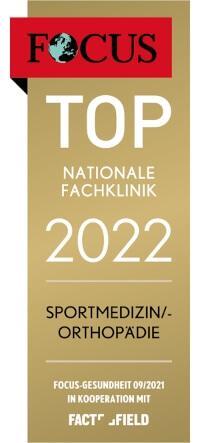
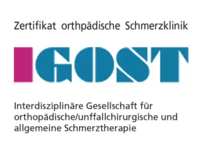
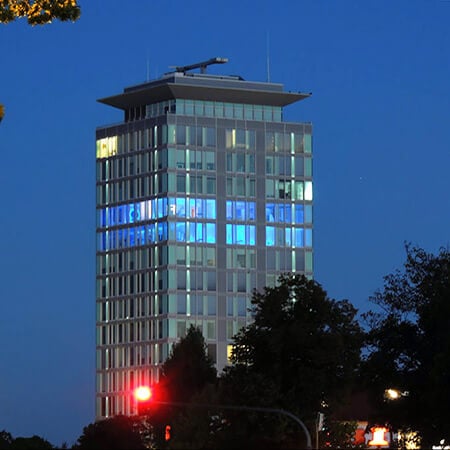
Department of Orthopedics
The Department of Orthopedics offers the comprehensive diagnostics using high-precision imaging equipment, as well as conservative and surgical treatments for all diseases, injuries and functional limitations of the musculoskeletal system. The department uses the very latest treatment methods, such as acupuncture, autohemotherapy, PRP therapy, shockwave therapy, K-Taping therapy, etc. In the field of surgical treatment, the preference is always given to minimally invasive, endoscopic and arthroscopic operations.
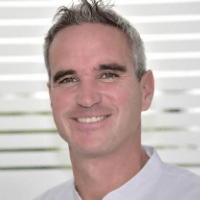



Department of Adult and Pediatric Orthopedics
The University Hospital Ulm is an advanced medical complex that provides patients with high-class medical care using the very latest scientific achievements. The medical facility has been performing successful clinical activities for more than 40 years and has long earned an excellent reputation throughout Europe. The hospital regularly demonstrates high treatment success rates, takes an active part in the training of medical students, and works tirelessly on promising research projects. The university hospital consists of 29 specialized departments and 16 scientific institutes, where more than 7,000 highly qualified employees work for the benefit of their patients. More than 55,000 inpatients and about 300,000 outpatients are treated here every year. The hospital has 1,274 beds. The medical team of the hospital is focused on providing personalized medical services using the most modern and sparing diagnostic and treatment methods.
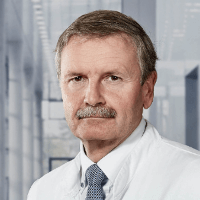





Approximately 0.8% of the population in developed countries has at least one artificial knee joint. The main reason for replacement surgery is gonarthrosis. This is the gradual "wear and tear" of the knee joint, which usually occurs with age or as a result of traumatic knee injuries in athletes.
Gonarthrosis affects 20% of the population. When a condition interferes with limb function or results in chronic pain that is poorly controlled by medication, doctors resort to knee replacement. You can undergo this surgery abroad. Booking Health will organize your trip and help reduce the cost of treatment.
Content
- Indications for knee replacement
- Features of total replacement surgery
- How is knee replacement surgery performed?
- Why is rehabilitation needed?
- Rehabilitation methods
- Fast-track rehabilitation
- Effectiveness of rehabilitation
- Why is it worth undergoing treatment and recovery abroad?
- Treatment in European hospitals with Booking Health
Indications for knee replacement
Most surgical procedures are performed for gonarthrosis – the gradual destruction of the knee as a result of a degenerative process. Less often, the indications are severe injuries, rheumatoid arthritis, tumors and other diseases.
Knee replacement surgery can be unicompartmental (partial) or total. With gonarthrosis, indications for unicompartmental replacement surgery are:
- Damage to only the inner or only the outer part of the knee joint with its deviation outward or inward (valgus or varus deformity of the extremity).
- Large focus of aseptic necrosis in a single condyle.
Prior to surgery, the physician must make sure that the ligaments are intact and that the adjacent section of the knee, which is not subject to replacement surgery, is in good condition. Orthopedists also take into account the integrity of the meniscus and the thickness of the hyaline cartilage. The knee should be bent 80 degrees or more.
Indications for total knee replacement in gonarthrosis:
- Damage to all parts of the joint.
- Chronic pain.
- Angular deformities and contractures that impair the limb support ability.
Replacement surgery is the last-line treatment method that can be resorted to if other methods are ineffective. Whenever possible, doctors try to perform surgery after 50 years, since the service life of even the most modern endoprostheses is limited. Younger patients may need repeated surgery after knee replacement in the future.
Cost of total knee replacement in knee arthritis is from €11,721.
Total recovery takes few months, but you’ll be able to walk in few days after the surgery.
Cost of total knee replacement with rehabilitation is from €15,983. You can find other prices on the Booking Health website.
The best hospitals in Europe for knee surgery and knee rehabilitation are:
- University Hospital Rechts der Isar Munich
- Vitos Orthopedic Clinic Kassel
- University Hospital Ulm
- University Hospital of Ludwig Maximilian University of Munich
- University Hospital Frankfurt-am-Main
Features of total replacement surgery
Total knee replacement surgery is more traumatic for the patient and requires long-term rehabilitation. However, it allows solving almost any problems with the knee joint, including even the most severe forms of gonarthrosis. After such an intervention, the pain completely disappears and the function of the limb is restored. The person can lead an active life and often returns to professional activities.
Whenever possible, mobile-bearing prostheses are implanted. They are used in patients who lead an active lifestyle and have an intact ligamentous apparatus. It is important that there are no osteoporosis or other conditions that impair knee function and may worsen knee damage in the future. In such an artificial joint, sliding movements are provided by a movable liner – it performs the function of the meniscus. The mobile-bearing endoprostheses are characterized by a long service life: they wear out very slowly, even in young and physically active patients.
The elderly patients with low physical activities can be implanted with a fixed-bearing endoprosthesis. It provides poorer functional results, but costs less. Such a prosthesis wears out faster under the influence of physical exertion.
With significant destruction of the knee, doctors have to use hinged and constrained endoprostheses. The constrained ones contain mechanical stabilizers that act as ligaments. The hinged ones are used for bone deficiency. They are often implanted during revision replacement surgery.
How is knee replacement surgery performed?
Total knee replacement surgery is performed under general anesthesia or spinal anesthesia. The doctor makes an incision in the joint and opens the capsule. The surgeon removes the patient's own tissues affected by the pathological process and replaces them with an artificial endoprosthesis.
Whenever possible, doctors preserve the patient's own ligaments. Sometimes the doctor can strengthen them to provide good knee stability. This approach increases the life of the endoprosthesis. However, it is not always possible to preserve the ligaments. In severe cases, the knee must be removed totally with the implantation of a constrained prosthesis.
In modern orthopedic centers, knee replacement surgery is performed under the guidance of computer-assisted navigation. It allows for a very accurate placement of the prosthesis by adjusting its position to 0.1 degrees and 0.1 mm. This results in a minimum deviation of the biomechanical axis of the limb, which prolongs the life of the endoprosthesis. Studies show that if computer-assisted navigation is used for the artificial joint implantation, the risk of aseptic endoprosthesis loosening within 8 years is reduced by 8 times – from 25% to 3%. Aseptic loosening is a major cause of revision knee replacement surgery.
Upon completion of the surgical intervention, the wound is sutured. Sometimes the doctor leaves drains for fluid outflow. These are thin tubes that are removed after 1 to 2 days.
In the postoperative period, the patient receives pain therapy. The doctors abroad use preemptive analgesia. The drugs are administered even prior to the onset of severe pain. In the early days, narcotic analgesics can be used as well. In the future, therapy involves the use of nonsteroidal anti-inflammatory drugs.
Patients receive accompanying and symptomatic therapy. The doctors provide drug prevention of infections. Antibiotic therapy begins prior to surgery and continues after it. Patients also receive anticoagulant therapy. Injection of direct anticoagulants helps to reduce the risk of thromboembolic complications – the most dangerous ones that cause the majority of deaths during orthopedic surgery.
Why is rehabilitation needed?
After total knee replacement, early rehabilitation is needed to prevent complications, ensure normal wound healing, and achieve the patient's self-care ability. He learns to walk, get up and sit down, take care of his hygiene and household needs.
After 2-3 weeks, the late rehabilitation phase begins, which lasts several months. After replacement surgery, it allows for complete pain elimination, limb support ability restoration, muscle workout, and correct walking stereotype formation.
Those undergoing rehabilitation in a specialized center accelerate the process of restoring limb function after knee replacement by 40%, and get the best long-term functional results. Although the cost of treatment increases if you are in a rehabilitation center rather than at home, the end result will bring many benefits, the most important of which are improved quality of life and reduced risk of revision surgery.
Rehabilitation methods
The concept of rehabilitation includes any medication methods and non-drug procedures that facilitate the adaptation of the patient and improve his functionality. Rehabilitation activities include therapeutic exercise, physiotherapy, training in walking and other skills, the use of orthoses, psychotherapy, massage, and all other procedures performed after total knee replacement.
Here are some rehabilitation methods used in foreign orthopedic and rehabilitation centers:
- CPM therapy (continuous passive motion) – long-term repetitive passive movements in the knee set by the device. It is used in the early stages of rehabilitation and allows the patient to quickly increase the angle of active knee flexion.
- Kinesiology taping – bandaging with adhesive elastic tape to improve blood circulation and eliminate edema.
- Robot-assisted gait reconstruction using the Locomat device in the early rehabilitation period – allows the patient to quickly restore walking skills and move on to more intense exercising.
- Stabilization and motor control exercises – provide knee stability, which is important for walking, getting up off a chair, and standing on one leg.
- Workouts for building the muscles of the thigh, lower leg, buttocks.
- Various types of muscle stretching: passive, active, proprioceptive neuromuscular facilitation.
- Physical exercise in the water.
- Pilates.
Fast-track rehabilitation
Some clinics use the fast-track rehabilitation program. It reduces the average length of hospital stay to 7 days instead of 14 days. Many are discharged after only 4-5 days – after achieving self-care ability. Studies show that patients recovering from the fast-track program have better functional results after 3 months. After 12 months, they are the same as with the standard approach to rehabilitation.
Fast-track recovery is also beneficial for your health. It reduces the risk of complications by 50% and reduces the likelihood of readmission by 30%.
When using the fast-track recovery protocol, total knee arthroplasty is performed not under general anesthesia, but under spinal anesthesia. The patient is given an injection in the lumbar region. Sensation in the legs is blocked at the level of the spinal cord. The person is awake, but can sleep during the surgery.
Painkillers can be prescribed even prior to surgery. Immediately after knee replacement, the patient receives infiltration anesthesia using local anesthetics: drugs that block nerve endings are injected into the knee. Doctors then use compression stockings, which not only reduces the risk of thromboembolic complications, but also enhances the analgesic effect. Systemic pain relievers are used in parallel.
After total knee replacement under spinal anesthesia, the patient can be activated within a few hours after surgery, rather than the next day. This is especially important for elderly patients with comorbidities. Their complication rate is significantly reduced. Studies show a decrease in postoperative mortality rates from 0.44 to 0.07%.
The patient gets out of bed and walks with support. On the same day, he can get up again and try to walk up the stairs. He performs the exercises while lying in bed. The next day, physiotherapy starts. It is carried out twice a day.
Effectiveness of rehabilitation
Doctors constantly monitor the effectiveness of rehabilitation after total knee replacement in order to timely adjust the program. The results are also evaluated at the end of the program. The main indicators of success are:
- Angle of active and passive knee flexion.
- Extension angle.
- Severity of pain.
- Strength of the thigh muscles, primarily the quadriceps.
- Support limb ability.
- Gait.
- Patient's satisfaction with limb function and quality of care.
- Patient's quality of life, the ability to return to professional or sports activities.
Why is it worth undergoing treatment and recovery abroad?
Doctors abroad perform both unicompartmental and total knee replacement. The specialists successfully perform surgical interventions even in the most severe cases, including revision replacement surgery. Treatment takes place with minimal health risks.
Benefits of knee replacement abroad:
- The best foreign orthopedic clinics have state-of-the-art equipment.
- These hospitals employ experienced doctors who have already performed thousands of total knee replacement procedures.
- Minimal health risks: complications are extremely rare due to high-quality accompanying therapy and early rehabilitation.
- The artificial knee joint is positioned very accurately, so the risk of loosening is minimal.
- Most of the patients who are treated abroad will not need revision surgery to replace the endoprosthesis in the future.
- High-quality endoprostheses, the service life of which is designed for tens of years.
- Good functional results: limb support ability, muscle strength, coordination, knee stability are fully restored after rehabilitation.
- Complete absence of knee pain at any level of physical activity.
Treatment in European hospitals with Booking Health
To undergo treatment in European hospital, please use the services of Booking Health. On our website, you can see the cost of treatment in different hospitals, compare prices and book a medical care program at an affordable price.
Please contact the Booking Health specialists to undergo treatment in European hospital. Here is what we will do for you:
- We will choose the best European hospital, whose doctors specialize in knee replacement surgery.
- We will help you overcome the language barrier, establish communication with your attending physician.
- We will reduce the waiting time for the start of the medical care program and book a doctor's appointment on the most suitable dates.
- We will reduce the price. The cost of treatment in European hospitals will decrease due to the lack of additional coefficients for foreign patients.
- We will take care of all organizational issues: documents for entering the country, transfer from the airport, hotel, interpreter, etc.
- We will elaborate a program and translate medical documents. You do not have to repeat previously performed diagnostic procedures.
- We will provide communication with the European hospital after the completion of your medical program.
- We will organize additional medical examinations and treatment in European hospitals, if necessary.
- We will buy medicines abroad and forward them to your native country.
- We will help you keep in touch with the hospital and the doctor after the completion of treatment and rehabilitation in European hospitals.
Booking Health makes treatment in European hospitals easier, faster and cheaper. We will fully organize your trip, and you will only have to focus on restoring your health.
Authors: Dr. Vadim Zhiliuk, Dr. Sergey Pashchenko

